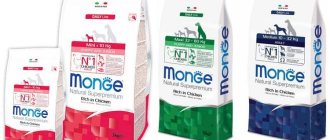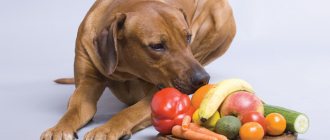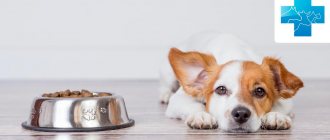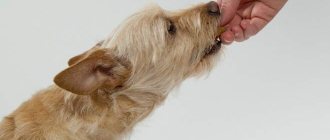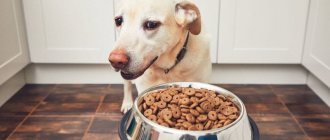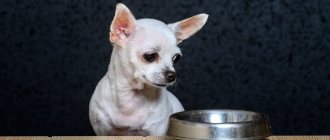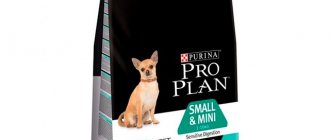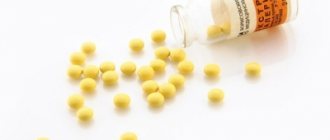At first glance, dog and cat food looks similar, but can these animals eat each other's food?
Often, owners (even with extensive experience) do not know everything about the differences in the physiology of dogs and cats. Despite their apparent similarities, these animals have very different dietary needs. Let's take a closer look. We are often asked, “Why can’t I give my dog and cat the same food?” or “My dog seems to like cat food better. Can it be used on an ongoing basis? In short, no. When the dog eats a little from the cat's bowl, he will most likely be fine (in the absence of individual allergic reactions). However, if this becomes a habit and the dog eats cat food as its main source of nutrients, there may well be unpleasant consequences in the long run. The converse is also true for cats.
There is no doubt that similar meat ingredients are used in pet food, but the main issue is the proportion, the balance between the various components.
Taste preferences of dogs and cats: nutritional characteristics and differences in diet
Canines and cats are carnivores. Wild cats hunt birds and rodents on their own and eat them whole. The victim's gastrointestinal tract contains plant fibers, carbohydrates, proteins, and food enzymes.
Small mammals eat grains, fruits, and vegetables. Complex carbohydrates are partially broken down into simple sugars. That's why cats love sweets; there is always a lot of glucose in their blood. The cat takes its prey to a secluded place and enjoys the food, eating it in small portions.
Wild dogs hunt in packs, mainly on small ruminants. Dominant individuals approach the prey first. The remaining members of the pack wait until the leaders are full, then pounce on the food, swallowing the pieces without chewing. Most of the contents of the gastrointestinal tract are occupied by feed containing coarse fiber - green or dry grass, tree bark.
Therefore, dogs are accustomed to eating food with a high concentration of fiber. If the dog is walking around the garden, he can eat bell peppers or grapes. Compassionate animal lovers feed their dogs bread.
Production
Dry and wet food are based on a similar set of ingredients, but different technologies are used in their production.
“To prepare dry food, cereals, meat and fish components, vitamins and minerals are first crushed and mixed. Water is then added to obtain a wet mass. The product is prepared and thermally processed using steam. At this stage, hydrolysates are added. They are needed so that the final product has a taste and aroma that pets will like. The mass is then prepared under pressure and passed through a pressing machine, which shapes the individual pieces. Afterwards they go into the oven, where excess moisture is removed from them. Then the pieces are poured with meat broth to form the top layer, cooled and packaged,” said Stanislav Karlov, head of the department for relations with the scientific community of the animal feed manufacturer .
Making wet food starts in a very similar way: animal and plant ingredients are thoroughly mixed. The resulting product is enriched with vitamins and minerals.
“Then comes what is called homogenization - the mixture is crushed or chopped to obtain a more uniform texture. Afterwards, the product undergoes thorough heat treatment and is distributed into portions. They add jelly or sauce. All that remains is to pack the food into pouches and carry out the sterilization process,” explained Stanislav Karlov.
Often different brands of food are produced in the same factories. This should not scare the buyer.
“There are not many feed manufacturing enterprises in our country. If expensive and cheap products are made in the same factory, this does not mean that they are identical to each other. It all depends on the production technology. Each company uses its own products and recipes. The only thing is that at such enterprises it will not be possible to obtain medicinal food, as for allergy sufferers, because... there is a high probability of other sources of protein getting into it, for example, in monoprotein food,” said Daria Fedotova, president of the Society of Veterinary Dietetics and Clinical Nutrition, gastroenterologist .
What to treat the birds with? Choosing a place and food for birds Read more
Food for cats and dogs: what is the difference?
Supermarkets sell economy or premium food. Manufacturers do not disclose the recipe for ready-made food; at best, they list the components in general phrases: meat ingredients, grains, vegetable oils, herbs, etc.
To find out how food for cats and dogs differs, let’s go to a pet store and look at ready-made food of at least super premium class. So, on the packaging of 1st choice dry food for kittens it is written that the food contains 17% fresh chicken meat, the same amount of chicken flour, as well as dried eggs, herring fish meal, and liver hydrolysate. The food contains 30% proteins, 20% fats.
The packaging of 1st choice dry kibble for puppies states that it contains 33% chicken meal and liver hydrolysate. Even an ignorant buyer understands that the nutritional value of fresh chicken meat is higher than flour, which is prepared from the heads, paws, and contents of the digestive tract.
The feed mixture contains 26% proteins with a large percentage of vegetable proteins, 14% fats. In addition, taurine is added to cat food, since the body produces little sulfoamino acids.
Canines do not need taurine, since it is synthesized in sufficient quantities. Excess biologically active substances have a toxic effect on the body. L-carnitine is added to cat food. During high physical activity, this amino acid extracts energy from fats, and with physical inactivity it leads to excess weight gain.
The need of cats and dogs for minerals and vitamins is not the same, so consuming food that is not intended for a given species and age leads to an imbalance of nutrients and negatively affects the health of the pet.
Difference between animals
In the diet
Let's start with the fact that dogs are herd animals, and cats are solitary individuals. The process of evolution has formed certain rules:
- Cats are exclusively carnivores, eating meat or fish .
- Dogs sometimes even eat vegetables (potatoes or cucumbers are often included in a dog's diet), but this does not mean that they are omnivores. There are a number of products that are strictly prohibited.
- Cats eat much less frequently , up to once a day. In the wild, lions and tigers eat only when absolutely necessary, and in order to save energy, they rest in all their free time.
- The dogs were on the move all the time . For example, wolf packs migrated from place to place, in search of shelter or places rich in prey. Accordingly, more energy was spent.
- Cats have a longer torso in relation to the body, and therefore a longer intestine , thanks to which they can digest large amounts of food at one time.
- Dogs have average intestinal lengths , since after eating they did not have the opportunity to rest for the rest of the time.
- In dog packs, there is a clear hierarchy : the leader and retinue get the main part of the food, gamma and omega individuals eat last.
- Cats share food almost equally . The male forages for food, which the cubs and female share equally.
In the digestive system
Dogs are adapted to digest raw meat, bones, cartilage, offal, and some inorganic elements, while cats consume low-fat meat, separating it from bones and other parts of the victim’s body.
Food manufacturers also take into account the differences in the digestive system - in cats it has an acidic environment, and in dogs it is alkaline.
Cat food can cause heartburn and indigestion in some cases. REFERENCE! Also, cats can digest salty foods and fish. This fact is determined by the habitat. Cats, unlike dogs, did not pose a great danger to humans, so they could live in cities where they began to be fed fish. In the wild, cats, of course, do not fish, and do not even know how to swim.
Age factor
Depending on the age, the animal’s body requires different amounts of nutrients.
- After birth , puppies eat only mother's milk so that the microflora of the stomach and intestines can form without problems. Milk is easily digested and contains all the necessary elements.
- When the baby's teeth have formed , it is necessary to provide him with solid food. The food for puppies contains an increased amount of minerals and bone meal, which will ensure the proper development of the jaw apparatus and dental health. At the same time, the amount of protein and fat should not be too large so as not to overload the digestive system.
- For adult individuals, the amount of minerals is reduced to average levels to prevent the development of tartar and calculus deposits inside the body. The amount of protein is increased to supply the body with resources for an active lifestyle and rapid regeneration.
- For pregnant and lactating dogs, the food contains an increased amount of vitamins to supply the baby with the necessary elements. Slightly increased amount of fat as energy expenditure increases during pregnancy.
- For older dogs, food is balanced so that all components are supplied in equal proportions.
May or may not be given
Cat food contains more calories and protein than a dog that lives in an apartment and doesn’t move much needs. Some veterinarians recommend a cat diet for malnourished animals. The pet will quickly gain the missing pounds, but when experimental feeding continues for 2 weeks or more, health risks arise.
Feeding wet cat food makes the situation worse: canned food tastes better than kibble. Begging develops, the dog terrorizes the household, and when its whims are satisfied, it becomes impudent and tries to steal food from the table. The risk of mental illness in the animal increases.
If a dog eats cat food once, nothing bad will happen to him. You cannot constantly give your dog ready-made cat food: it is dangerous to health.
What to choose: dry or wet food?
Veterinarians believe that with constant use of one type of food, the animal’s digestive system is rebuilt and it becomes difficult for it to process food of a different consistency. That is why many breeders try to feed their pets either exclusively dry or only wet food throughout the animal’s life, making a choice at an early age. Switching from one type of food to another is always undesirable, as it is fraught with food refusal, an allergic reaction, illness and stress for a dog or cat. There is simply no clear recommendation or advice in favor of one particular type of nutrition. When choosing food, owners are encouraged to consider factors such as
- ease of feeding;
- the type of food consumed by the puppy or kitten from the breeder;
- available budget.
Whatever type of food the owner chooses, he should know that
- It is not recommended to combine products from different manufacturers or change them frequently for no apparent reason;
- medicinal feed can only be administered on the advice of a veterinarian;
- it is better to give preference to high-quality food from well-known manufacturers;
- When offering your pet different tastes, you should choose from one product line.
When relying on dry food or a new wet product, it is important to monitor the animal’s condition, its stool, mood, health and appetite. If your friend is cheerful and active, you have made the right choice!
And you can buy dry or wet food for your animals, of the highest, premium quality, at. Only with Matroskin27 will your pets always be properly and tasty fed!
Why do dogs eat cat food?
Dogs are accustomed to living in a pack and obey the established hierarchy. A low-ranking individual strives to rise one step higher, so he mocks those who are weaker. This is how the dog eats food from the cat's bowl for the first time.
If owners use economy-class food, the dog develops an addiction due to flavor enhancers that give the cheap food the taste of meat. The dog makes the next approach to wet food, which it likes more than dry food. With the connivance of the owner, the animal develops a reflex. The dog demands his way, and when the owner decides to show character, he whines until he gets his way.
How to Prevent Stealing from Your Dog Bowl
It is almost impossible to wean a cat from stealing from a dog bowl through education and training, so you can use alternative methods.
Tastes better from a friend's bowl
You can make sound traps from cans, nuts or cereals. When your pet approaches the dog's bowl, scare him with noise each time. But this method has a number of disadvantages.
First, the cat owner must be patient and consistent. The cat will try again and again to get to the dog food.
Secondly, if a pet steals someone else’s food at least once, progress can be considered lost.
Thirdly, the traps will have to be set so that they are triggered when the owner is sleeping or no one is home. Otherwise, the cat will only steal at night or in the absence of people.
The main disadvantage is the possibility of psychological disorders. Noise, water and other punishments can cause a cat to become nervous. If the animal has a weak heart, complications may arise.
A cat will not steal dog food if it is sure that it will always be fed on time. Feed your pet a thoughtful diet of complete ingredients.
Harm of cat food to a dog's body
Systematic eating of cat food leads to the following pathological symptoms or diseases:
- Obesity, which provokes diabetes mellitus, pancreas and liver diseases.
- Protein overfeeding: increases the risk of urolithiasis and nutritional allergies. The kidneys are affected and a stomach ulcer develops.
- Cholesterol plaques form on the walls of blood vessels, increasing the risk of heart disease.
- Shortness of breath develops, and the likelihood of respiratory diseases increases.
- If a dog is given economy class cat food, it gets used to flavor enhancers that imitate the presence of meat in the food mixture. The pet refuses dog food and demands cat food.
A large breed dog rarely develops an addiction to food that is not his own, but miniature dogs develop an addiction.
They refuse any other food. Cats may eat dog food when they are very hungry or for self-esteem. In the latter case, the matter does not go beyond eating a few croquettes.
What to do if your pet ate cat food?
We need to figure out how to make cat food inaccessible to the dog. Super premium food does not contain flavor enhancers, so the dog may remain indifferent and not look into the neighbor’s feeder in the future. Economy class food smells delicious and attracts the dog. A radical solution is to cut off the cat's access to food. Place the cat feeder somewhere where the dog cannot get into. A cat hole is built into the interior door.
If the dog is too small, this option will not work. Then the cat feeder is placed high so that the dog cannot reach it. This could be a window sill, a refrigerator, a special shelf for a cat with a mini-dining room that is mounted on the wall.
An avid animal lover, she had 5 dogs and 8 cats. She placed dog feeders on the floor and cat feeders on the closet.
How to stop your dog from eating cat food
The dog will wean itself off cat food when it loses access to it. Instead, you can buy wet dog food and give 1 pouch (bag) per day. If the dog refuses to eat, let him fast for several days.
The diet will not affect your health, your four-legged friend will again eat the same ready-made food with appetite. Pay attention to the condition of your pet's fur. If it is dull and comes out, it means the dog does not have enough nutritional components, or an allergic response to the components of the diet has formed. You need to switch to hypoallergenic food or super premium food.
Feed differences
Dog food differs from cat food in the ratio of proteins, fats and carbohydrates:
- Contains fewer meat ingredients and no eggs are added. Cats do not receive the required amount of taurine and arginine. With a regular lack of proteins, liver enzymes break down their own proteins.
- Includes more grains, vegetables . The cat's intestines are a third shorter and do not absorb them completely. The amylase enzyme is responsible for the breakdown of starch and plant components; cats produce only 5% of this figure in dogs.
- Contains less fat . Cats develop a deficiency of arachidonic acid and do not absorb fat-soluble vitamins.
Dog kibble for cats lacks vitamins B, E, iodine, and biotin. The content of individual micronutrients exceeds the norm for cats: calcium, magnesium, vitamins C, A, D, K. Dogs synthesize taurine themselves, so it is not added to food.
